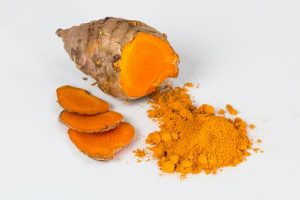Table of Content
FSSAI Standards for Turmeric (Haldi)

Haldi or Turmeric known as a golden spice is used in India for thousands of years. The use of turmeric dates back nearly 4000 years to the Ancient Vedic culture in India. That time it was used as a culinary spice and had some religious significance. Turmeric is native to tropical South Asia. Commercially the rhizomes are called bulbs or fingers. Turmeric contains an important bioactive compound called curcumin. Curcumin present in turmeric has both anti-inflammatory and anti-bacterial properties.
To regulate the food market and keep an eye on adulteration, Food Safety and Standards Authority of India (FSSAI) came out with the regulation, Food Safety, and Standards (Food Products Standards and Food Additives) Regulations, 2011.

The regulation includes following specifications for Turmeric whole and Turmeric powder:
Turmeric is a product of Curcuma longa, a primary or secondary rhizomatous herbaceous perennial plant belonging to the ginger family Zingiberaceae. Whole Turmeric rhizomes must be processed. Rhizomes are boiled or steamed to remove the raw odor, gelatinize the starch then drying them to avoid regeneration. Whether natural or machine polished, the rhizomes must produce a uniform characteristic color, odor, and flavor.
The standards of Turmeric (Haldi) whole:
| 1. | Extraneous matter | Not more than 1.0% by weight |
| 2. | Defective rhizomes | Not more than 5.0 % by weight |
| 3. | Moisture | Not more than 12.0% by weight |
| 4. | Insect damaged matter | Not more than 1.0 % by weight |
| 5. | Test for lead chromate | Negative |
According to the standards, Turmeric (Haldi) powder means the powder made by grinding dried rhizomes or bulbous roots of Curcuma Longa L. The powder shall have characteristic odor and flavor of Turmeric.
The standards of Turmeric (Haldi) powder:
| 1. | Moisture | Not more than 10.0 % by weight |
| 2. | Total ash on a dry basis | Not more than 9.0% by weight |
| 3. | Ash insoluble in dil.HCL on a dry basis | Not more than 1.5 % by weight |
| 4. | Colouring powder expressed as curcuminoid content on a dry basis | Not less than 2.0 % by weight |
| 5. | Total starch | Not more than 60.0 percent by weight. |
| 6. | Test for lead chromate | Negative |
Turmeric as a whole or Powder shall be free from mustiness or other foreign odors. The products must be free from mold, living and dead insects, insect fragments, and rodent contamination. They shall be free from any added coloring matter including Lead Chromate and morphologically extraneous matter including foreign starch. The bottom line is the standards will guide the food business operators of Turmeric and maintain the quality of Turmeric available in the market.
References:
- Compendium_Food_Additives_Regulations_29_03_2019 (1).pdf. Available at:
https://fssai.gov.in/…/Compendium_Food_Additives_Regulations_29_03_2019.pdf.Accessible on : 29.05.2019
Enquire Now
To enquire about our services please complete the form below and we will be in tough with you as soon as possible
Food Regulatory Services
- Consumer Product
- Compliance Services
- Licenses